4Wall In The News
LD Tom Kenny & 4Wall Light the 2024 CMT Music Awards
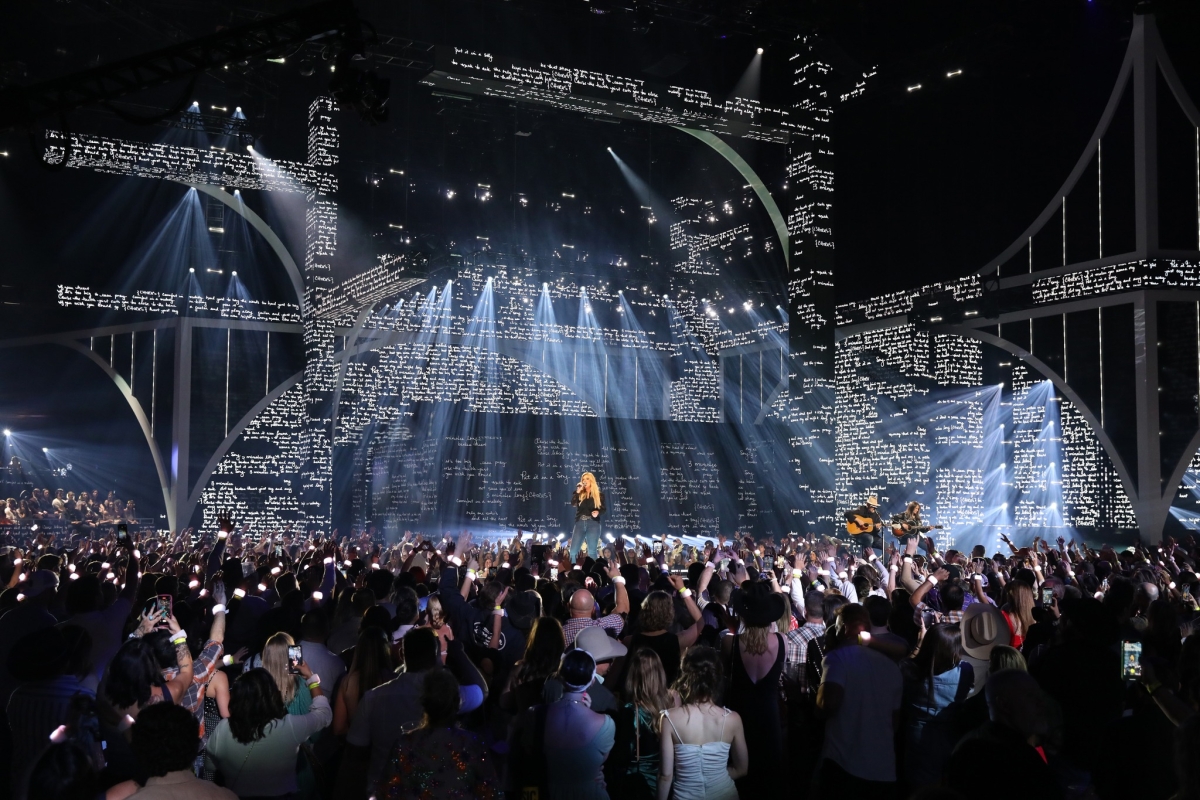
4Wall provided LD Tom Kenny with a lighting rental package for the 2024 CMT Music Awards, which were broadcast live on CBS and Paramount+. The article, which provides more details about the lighting design, was originally posted on PSLN.com and can be found here.
The 2024 CMT Music Awards were held at the Moody Center in Austin, TX. Back for the 12th year was Lighting Designer Tom Kenny and, for her 15th year, Production Designer Anne Brahic, along with longtime Screens Producer Trevor Burk. Their work supported the performances and awards presentation throughout the night. Kenny and Brahic took time to speak with PLSN about their work on this live broadcast awards show, along with Lighting Director Felix Peralta.
TOM KENNY
Lighting Designer
With so many performance elements, how do you approach the lighting design?
I listen to the songs and I wait until we get on camera and then speak with the whole team. Felix, Fuji [Lighting Director, David "Fuji" Convertino], and I, we listen, we watch the camera angles. We make everything very different and try to add a bit of drama here and there. It's a great process. The bands are really good groups of people and are just very positive. We had a great time. It was so laid back, calm, and everybody was lovely. All the artists were fantastic and there was a really good vibe. Over the years, we've changed the look so many times, but we keep within this architectural look that Anne's team creates, and we've got great video content people, led by Trevor.
Talk about the considerations that need to be balanced when you have so much video content in the visual design.
We did have a lot of video, and not many places to hang lights. So, myself and Anne did a plot to make sure we could see a lot of the video elements. Also, we don't see the content until the band walks onstage for rehearsal most of the time. The whole team is so fast and so experienced in working on these types of shows that you've got an hour, sometimes an hour and a half to light it, make sure it's right, and make sure they're happy as well. So, for me, rehearsals are very important. You do it one time round, then you tweak it, tweak it, and you tweak it afterwards. You've just got to make sure that the artist is walking away happy; and they always are. It's just a really good collaboration. On the days of screens review, I always have Felix or Fuji sit with the producers, and they put up the screen look. We'll match it with a lighting look and we'll know that's the palette. It works really well; always has. That's why it looks so together. It looks as if we rehearsed for weeks but time is tight, and it is really people's experience that makes it happen.
And modern technology helps a lot also. We now have the ability to blend lighting and video, as well as modify colors so quickly and easily. It's amazing what we can do now, with the lights, and within the screens themselves. If we don't like an amber, let's say, then we can tweak the color for a song. For Jordan Davis, I had a very orange tungsten look, a brighter tungsten look. With the video guys, it's just one push of a button. They're able to fix it. It's all very fast now. These huge shows look great because everybody's got the same technology, and the technicians and programmers are very experienced.
Tell us about collaborating with Production Designer, Anne Brahic and Screens Producer Trevor Burk.
I'm such a fan of hers and we go back a long way, so we collaborate really well. She always sends me her first sketches to look at. I'll ask for space here and there. She's always very collaborative and a very nice person; always positive. Also, Anne works at a good speed and is always gracious and cool. With Trevor, the funny thing with me and Trevor, is that we won't say anything, but we're always thinking the same. We've got good telepathy, and again, he and his team work so fast. When his team and my team work together, we can decide really quickly. It goes back to everyone's experience and the technology. You never have to take time to fix a light, or deal with a video equipment issue today. The service you get-and the technicians you get-from these vendors is amazing. We aren't waiting on anybody and the technology now is so fast.
What were some of your key gear choices?
Obviously, a lot of Robe with the BMFLs, and a lot of Elation, especially outdoors at the UT Tower, where we used a lot of their IP65 rated gear to handle the rain. We had almost 250 units, mostly Elation. I used 26 Elation Excaliburs to light up the entire skyline. They are the new SkyTracker. We also had for this show some great gear from GLP and some wonderful units from Chauvet. Everybody's got great gear these days. With hybrid fixtures, lighting is in a really good place these days. Everybody's listening to the lighting designers. To me, color is really important, and a lot of the companies have really worked on their color.
Are you using more remote followspots on your projects?
Yes, it's all remote spots, everywhere. We had [Robe] BMFLs on this one. It's much easier for me, and for the crews. Last year was our first year in Austin for the CMT Awards, and out of 11 followspots, there was one guy who had ever done a followspot before. Within an hour, we had them all up to speed because they're all into video games. They were great. They really help me and are really my third wheel. Remote followspots are like a 'Get out of Jail Free' card. I always say, if you see it dark, just turn on the light. I don't even care if it's too bright, just turn on the light so at least their lit. All 11 of our followspot ops were fantastic this year.
How was the support of 4Wall for the CMT Awards?
I know I am in good hands with 4Wall, they couldn't have been better. I work closely with Bob Suchocki and Brad Hafer at 4Wall. They have a great process when it comes to prepping the gear. A big part of any show now is the prep. I do a lot of work with 4Wall and they do a great job. It's all to Bob and the Nashville office. You need to have people that know exactly what you need, especially with all the cabling and networking in the lighting rig, and with video, and with sound. You have to have the right cables.
Any of your team that you'd like to highlight?
For the main show at the Moody, I relied on Felix, Fuji, and Pickles, Michelle Griesmer, my Floor Lighting Director. Out at the UT Tower, I had Matt Piercy as Programmer and Han Henze as Lighting Director. They are all great and they really take their time with it all.
Anything else that you'd like to mention about designing for the 2024 CMT Awards?
We had a great time. We have a really good family vibe. I work a lot with CMT-Crossroads, Storytellers, and some of their other shows. The CMT Awards is one of those shows that everybody looks forward to. It's like a reunion each year. Everybody is so good at what they do, and it's so streamlined.
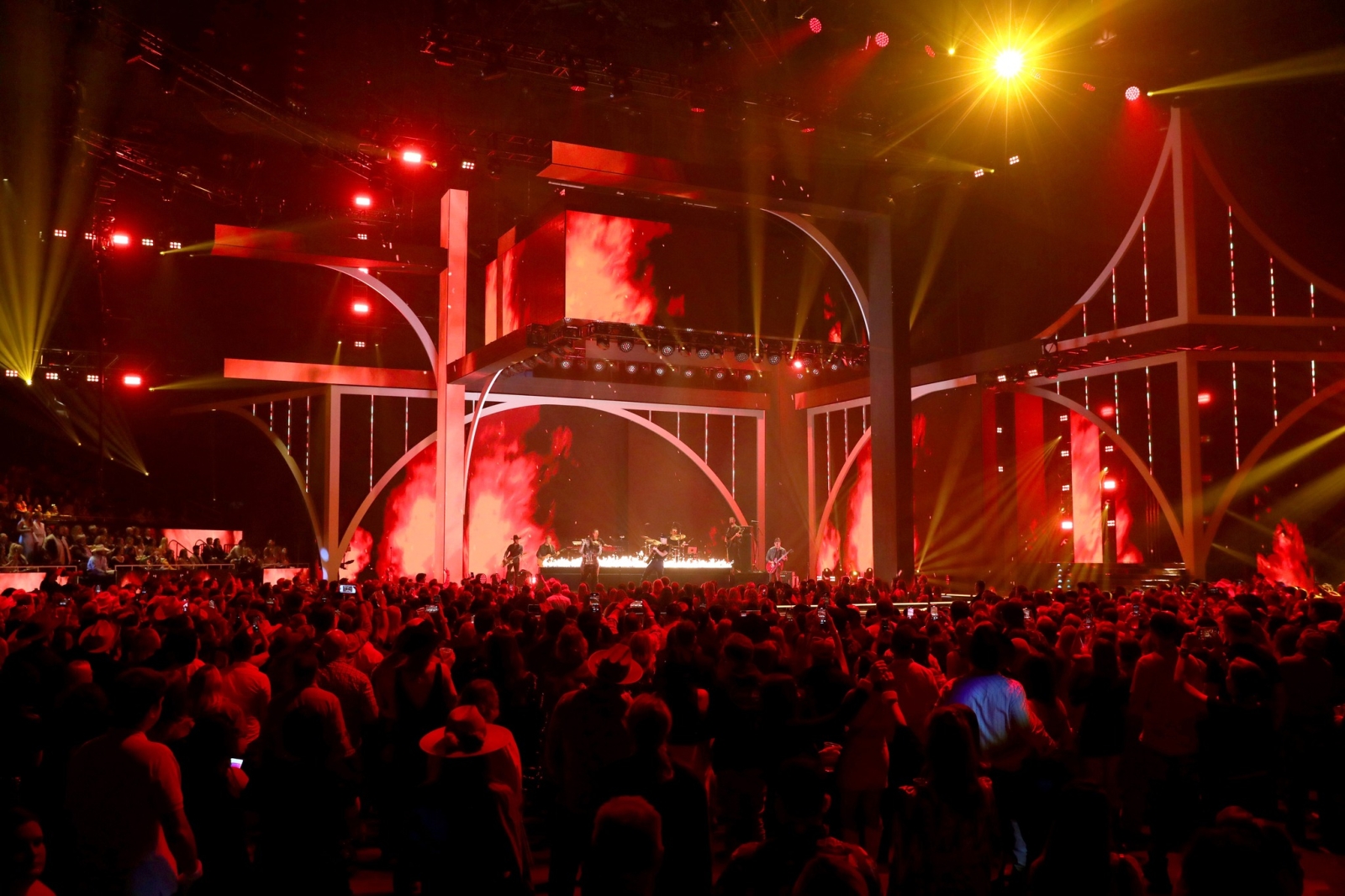
FELIX PERALTA
Lighting Director
Tell us about your workflow for this project.
I did a few days of pre-production work on the show, getting a lot of the data entry into the desk. The other Lighting Director / Programmer, David "Fuji" Convertino, drafts the shows for Tom. So, he was onsite before me. Fuji and I have a wonderful relationship as well. We have a similar workflow where Fuji does all the key and face lighting. I do all my side of the lighting for the performances. We had almost 1,000 lights on the CMT Awards show, but we were fortunate enough to have the build time to really work it at a human pace; really handcraft each of those looks. We did 12 performance numbers at the Moody Center for the CMT show. There were four or five performances at UT Austin outdoors.
What were some of your key gear choices?
We had a bunch of the Chauvet MK3 Wash, so we were able to get a lot of pixel magic with those units. We also had a boatload of [Chauvet] Color STRIKE M units. As well as a bunch of Robe [BMFL] Blades that were doing the audience, and they were doing a lot of the band back light and key lighting. There was also a bunch of GLP Bar 20s and a number of Elation Dartz out in the house and we had some Chauvet STRIKE Array 4 as well.
It was a very big beam show, but that's a Tom Kenny signature look, so we ended up with a lot of Robe MegaPointes, about 300 beam lights in total. It can be a challenge for trying to make life work with a lot of beam lines. With a lot of these beam lights, I treat them like an architectural shape. I need to let them land in a place where they aren't going to cross each other in a way that that is going to just look messy on camera. That was a little bit of a challenge. There's a saying in our lighting world, 'when in doubt, source it out.' Which means if these beams can't do anything for me, for example, in show look, I'm just going to flood them all out, making them as warm and fuzzy as possible. Then they are just a nice eight sources at a certain intensity next to the eight lights that are beams that can fit together in one picture; as opposed to 16 lights with beams of lights converging on each other. It is little tricks like that that we do when you have to manage so many beam sources.
How was the support of 4Wall?
It was an all-star 4Wall team. We were fortunate to have a nice amount of build time. Bob Suchoki was our Vendor Rep and Alex Flores was our Lead 4Wall person. 4Wall is a big reason for the success of this show and provided us with a solid team all across the board. We have a great team all around at the CMTs. I really thought we checked the boxes on this one and got it done very successfully.
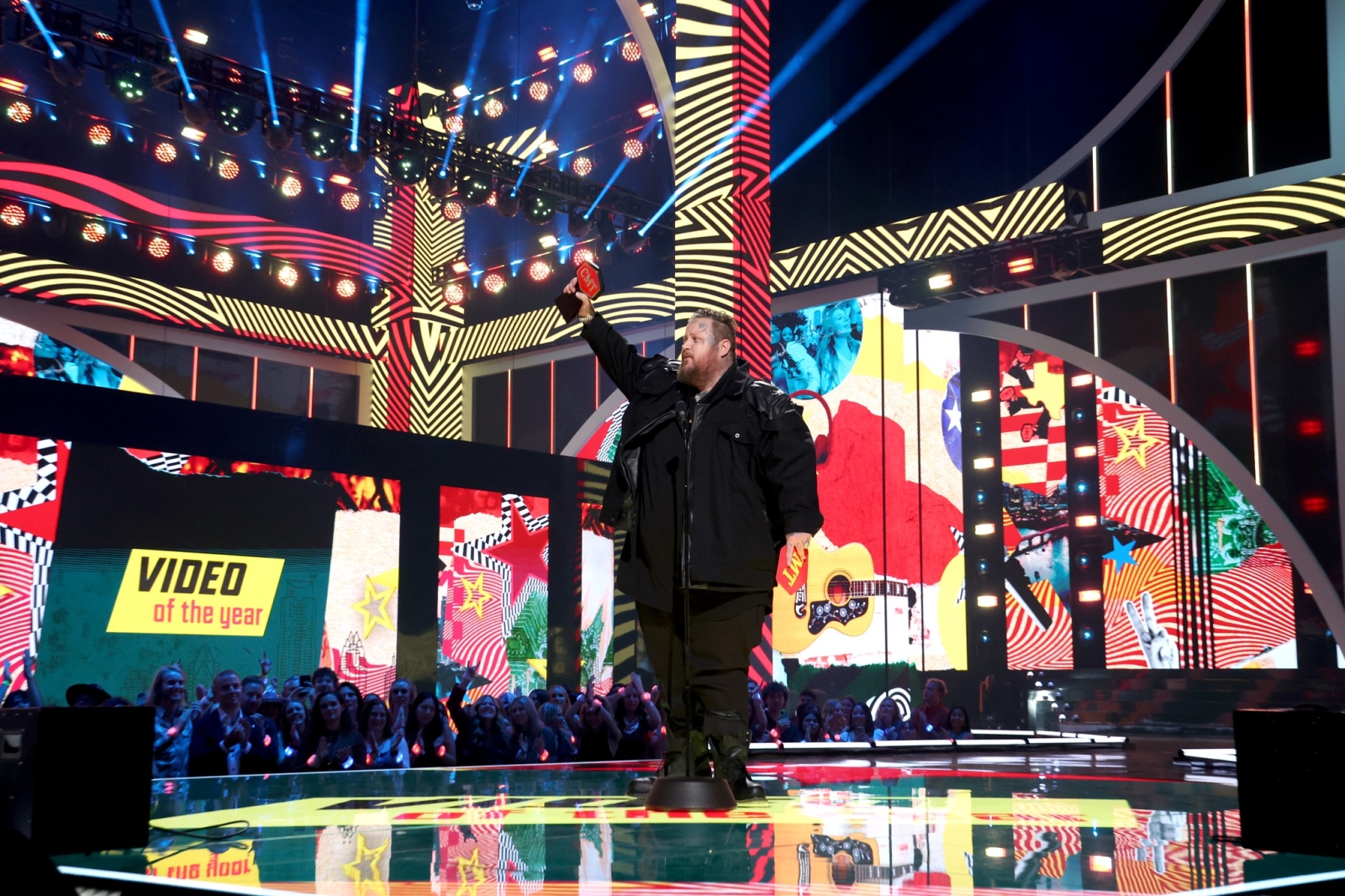
ANNE BRAHIC
Production Designer
With so many performance components, how did you approach the production design?
We started with function and form, and figuring out how to get the bands and their gear on, and off, stage. That's always a big part of the design. We've done it different ways in the past, and we originally planned on two stages with close downs to facilitate the changeovers, but we ended up with a single stage scenario. So, some performances moved to a remote stage on the UT campus to accommodate changeover times.
Tell us about the different visual elements you incorporated and how they supported the CMT Awards.
This is the second year in Austin, and we wanted to reference the city since the show had always been in Nashville before. It was hard trying to find a way to do it without making it too kitschy and not just using content on a screen. This year, I came up with the idea of a loosely, deconstructed architectural piece referencing Austin's Congress Street Bridge. It's a famous bridge that everybody flocks to at sunset in Austin. Thousands of bats fly out from under the bridge during sunset, at certain times of the year. The executive producer got excited to open the show with that scenic element and the bats flying, making it all about Austin. The opening performance was a big Texas tribute.
So, the set I came up with references that architecture and works for the scale of an awards show. I've spent years honing this vocabulary of 3D architecture using video tiles to get as much bang for our buck. It costs a lot of money to build scenery these days relative to being a little eco-friendlier. Using a lot of screens is great because we're not throwing out a lot of scenery after the show. Then, in terms of content, we build these layered 3D sets out of video that allows us to wallpaper the set with video, in a sense that there's already three-dimensional columns of LED.
And you had a diamond shape to the stage, letting you angle the set more.
I've been having fun the last two years playing with the stage not being symmetrical. The CMTs give me a pretty loose leash; sort of carte blanche to design what I want. The first year in Austin we did a two stage, and it was very intentionally unbalanced in a way. This year, we went down to a single stage, and I wanted to keep that sense of asymmetry; not have the stage feel like it was perfectly centered in the room. It makes for interesting shots from the side, and it just gives everything a bit of more three-dimensionality when it's pushed out into the room in a V shape. Also, the point of that stage was not actually on the center line of the venue, it was off to one side. We had an alternate stage pod that was out in the center of the room. That was backed by a fair amount of the main stage, and a place where we started a few performances; it was't just used as a host, or intro moment. We try to be very sculptural and three-dimensional in the room, pushing into the audience and making it feel like more of an environment and not just a presentational stage.
Talk about balancing scenic and video, especially when you have that much changing content in your visual design.
It's what's become a signature for me working on this show, which is literally using video as building blocks and not just as a surface to back a stage. I've spent a lot of time building columns, prosceniums, or ceilings, and not just walls. Essentially, using video tiles as Legos.
And this year, Tom added lights that could play content. The line between video and lighting has gotten blurred a lot.
Yes, it has. Especially as everything shifts to LED and less traditional lighting. Tom's great because he allows us to augment the set. It's great to stretch the budget using lights to stretch the set. I'll be designing vertical stripes of video and interfacing that with a vertical truss lined with a bunch of lights. I'm creating a pattern of video, then a truss of light and video. He's been great at helping me get that done. I render everything and build the set in 3D before I hand it off to my art director. A lot of times, as I mentioned, I will build in truss because I'm playing very three dimensionally with video and a lot of times skinning the trusses with video. So, I end up building a lot of a truss plot into that. It's fun to work with Tom to augment the video with architecture. I'm making shapes with the tiles on his trusses once we get into the air, so it becomes an extension of the set. Tom and I have been collaborating on this show for almost as long as I've been doing it. It's a really fun show for all of us to work on together.
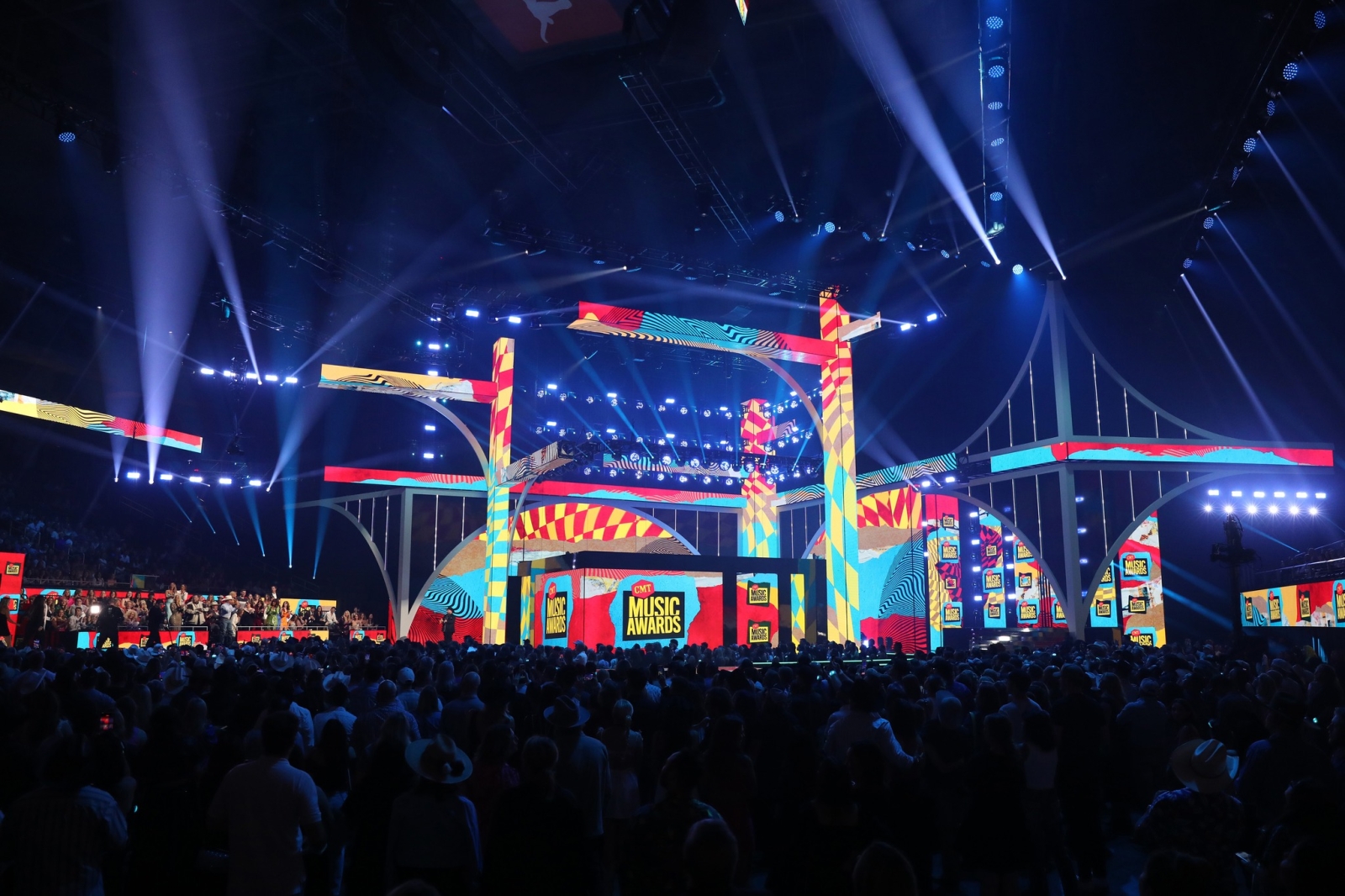
Production Team
- Lighting Designer: Tom Kenny
- Production Designer: Anne Brahic
- Screens Producer: Trevor Burk
- Art Director: Gloria Lamb
- Asst Art Director: Jonathan Stoller-Schoff
Main Show
- Lighting Directors: Félix Peralta, David "Fuji" Convertino
- Floor Lighting Director: Michelle Griesmer
- Gaffer: Cole Kiracofe
- Best Boy: Michael Smallman
- Lighting Crew Chief: Alex Flores
- Lighting Techs: Matt Weede, Daniel Teeter, Taylor Moore
- Media Server Programmer: Loren Barton
- Content Director: Zach Peletz
- Video Crew Chief: Michael Moxon
- LED Leads: David Imlau, Tom Armbruster, Brandon Oosterhof
- LED Techs: Russell Eia, Ryan Hollis, Austin Stengle, Kenny Stanley
Remote Stage UT Austin Tower
- Lighting Director: Han Henze
- Programmer: Matt Piercy
- Gaffer: Daniel Fly
- Production Electrician: Brian Monahan
- L1: Adam McIntosh
- L2s: Jake Riddell, Amy Sunshine Ross
- RoboSpot Tech: Ivy Weede
Vendors
- Lighting: 4Wall Entertainment, Bob Suchocki, VP of Live Events
- 4Wall PMs: Jonathan Wuthrich, Alex Flores
- Video: Fuse Technical Group, Tony Macre, Acct. Mgr.
- Fuse PMs: Rich Neal, Michael Moxon
- Special Effects: Strictly FX
- Set Construction: Concord Creative, Inc
- Decks and Staging: CommuniLux Productions, Accurate Staging
Gear
Lighting
- Robe BMFL
- Robe BMFL Blade
- Robe MegaPointe
- Robe 300E Beam Classic
- Elation Proteus Excalibur
- Elation Artiste Mondrian
- Elation Dartz 260
- Chauvet Maverick MK3 Wash
- Chauvet COLOR Strike M
- Chauvet STRIKE Array 4
- GLP impression X4 Bar 20
- Robe RoboSpot System
- grandMA3 Console
Video
- ROE Visual BM4 LED Panel
- ROE Visual CB5 LED Panel
- ROE Visual CB8 LED Panel
- Fuse Strips LED Strip
- Aoto 5.7 LED Pane
VENDOR VIEW
BOB SUCHOCKI
VP of Live Events, 4Wall
On what 4Wall provides beyond gear for this production:
Alex Flores, Director of Live Events at 4Wall, always does a great job laying things out, to make the prep, load-in, and onsite adds easy to accommodate. We try to spend a little extra time during shop preps to make onsite hours more efficient. Getting a show like the CMT Awards is never an easy task. This year we supplied lighting for the main show, remote stage, and the Red Carpet. Jonathan Wuthrich, 4Wall Nashville Project Manager, and the 4Wall Nashville shop did a great job making sure all the crews had their gear staged and ready to go at the beginning of prep, as well as rolled with all the normal last-minute pop-up requests.
On supporting LD Tom Kenny:
Anytime we work with Tom Kenny on project, we know it's going to be something special. He loves to create unique looks for the individual artist performances and can make a huge stage feel intimate with his approach. Tom, Alex, Fuji, and I have a great workflow making the process easy for everyone on the creative team.
On why 4Wall was the right vendor for this production:
4Wall has been working with CMT for a few years now, both on the CMT Awards and other CMT projects in Nashville. Jim Craig and the CMT creative teams have been amazing to collaborate with. Our inventory covers a wide range of products that helps achieve the looks they are looking for within a wide range of budgets.
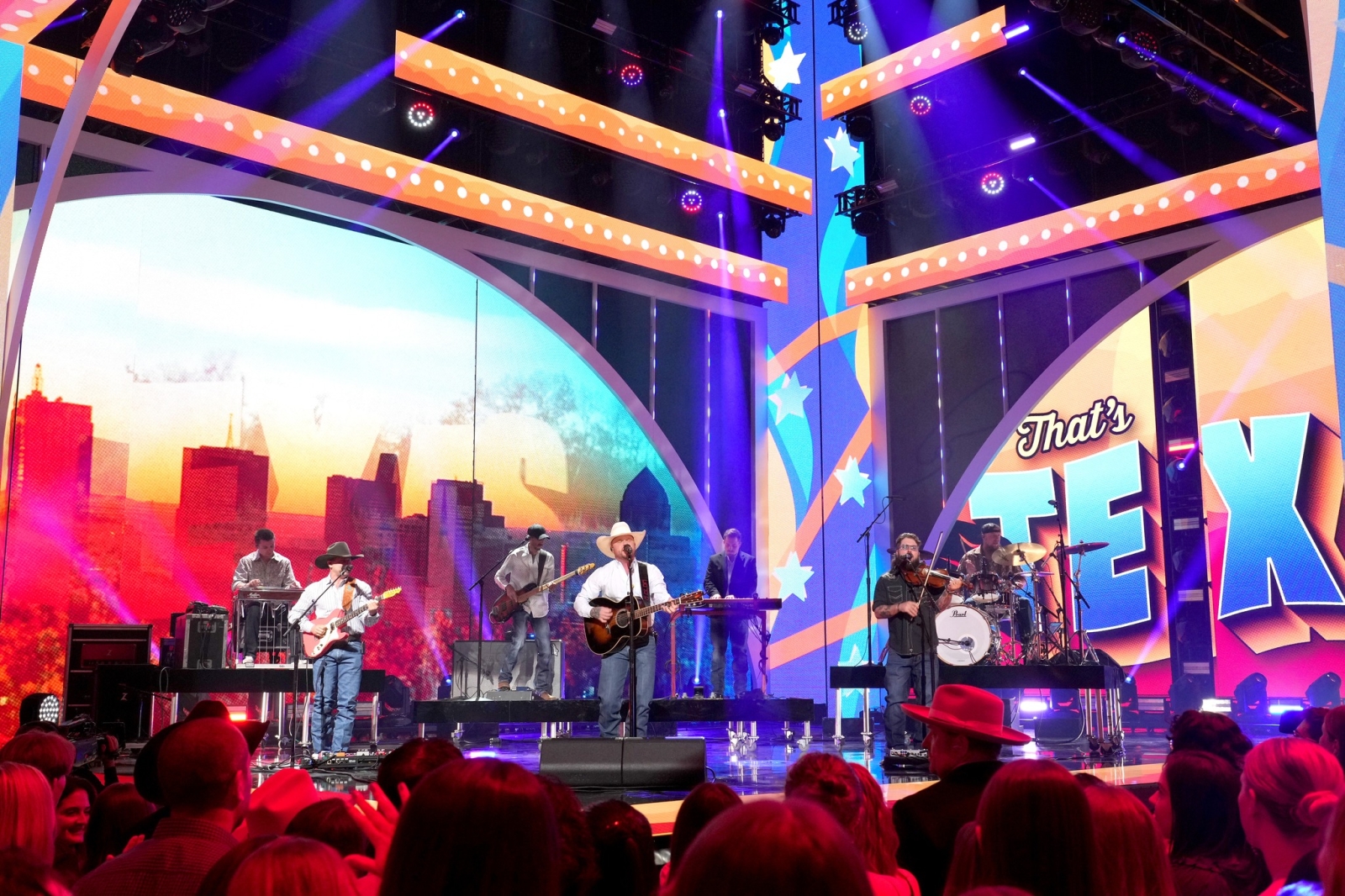
ADAM BISCOW
FX Designer/Supervisor, Strictly FX
On the challenges Strictly FX addressed on this project:
The challenge this year for the FX department was the size and design of the stage. Distance from the pyro devices to the general audience is 15' minimum. It gave us a very limited area to where we could place the effects, in addition to all the band gear and lighting that goes with each performance. There were also outdoor stage performances this year in front of The University of Texas Tower. Pyro needed to be placed in sensitive locations on certain rooftops. It required coordination with a number of University, Local, and State fire personnel. The solution in this case was to adjust where and when the audience was in relation to the FX. There was a camera track around each stage which bought us a little leeway, but ultimately the spectators also had to be moved back to create that zone of safety during the performances with pyro effects.
On supporting Production Designer Anne Brahic:
Anne is wonderful. I always enjoy working with her. I love her designs and she is always open to suggestions and ideas to help us get where we need to be in each performance.
On why Strictly FX was the right vendor for this production:
Television specials and award shows in general are very specific types of productions. They require a lot of planning and the ability to fabricate very specific types of custom FX. Changes happen quickly and at the last minute sometimes. Strictly FX with its locations across the U.S. and UK is uniquely suited to deliver top quality crews and gear, when and where it's needed.
